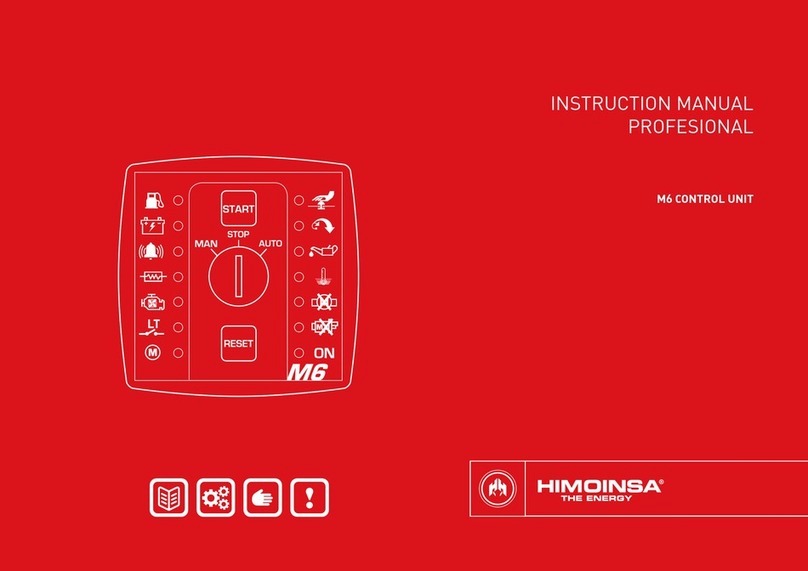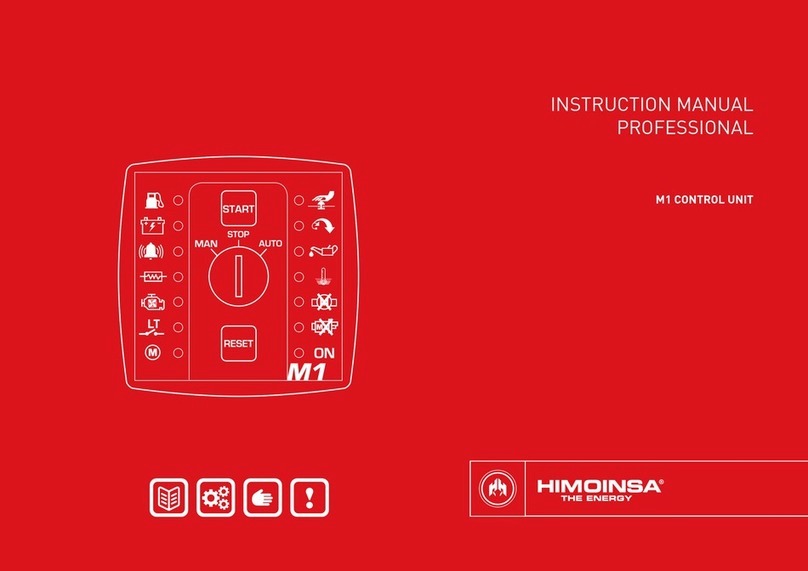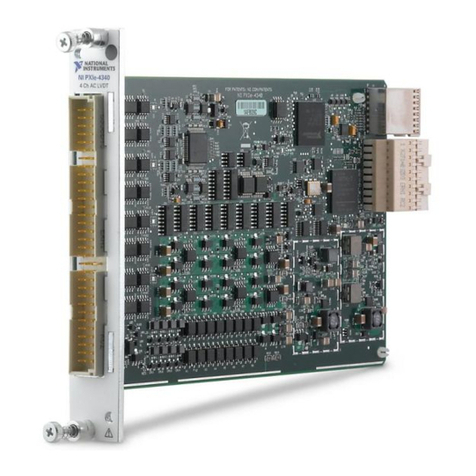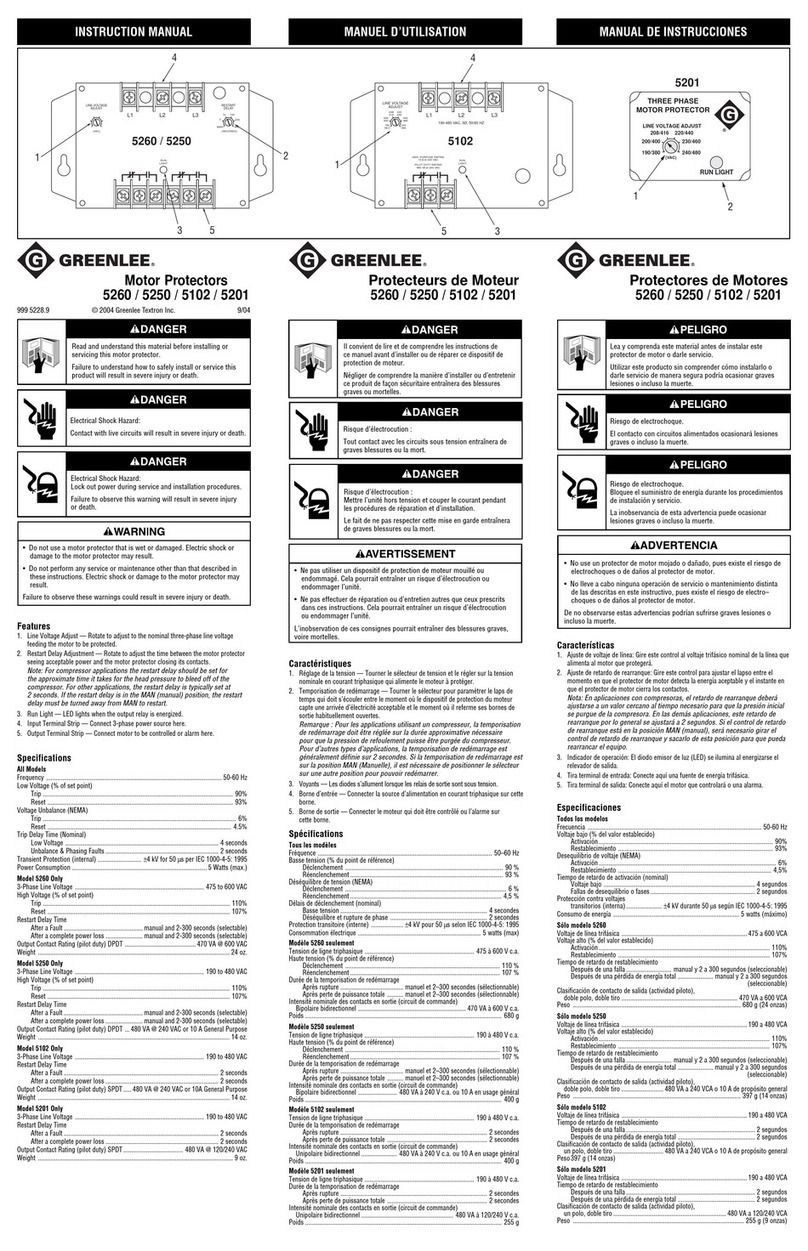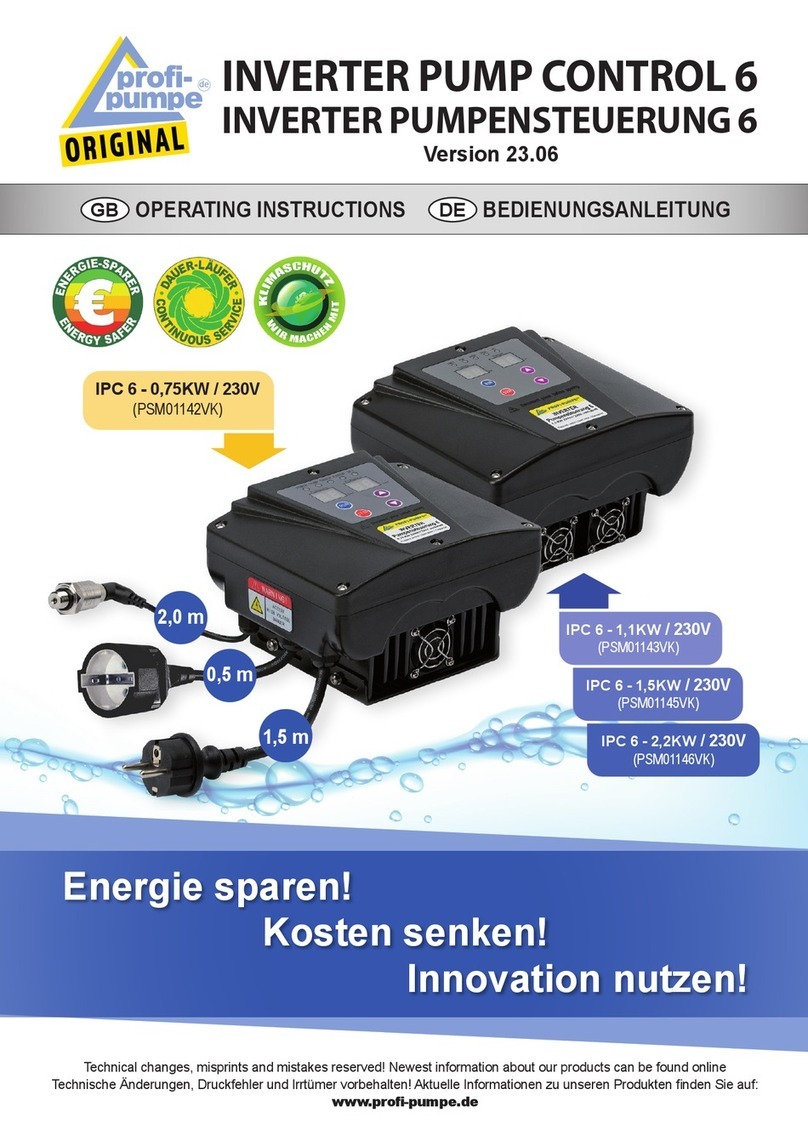Himoinsa CEA7 User manual

INSTRUCTION MANUAL
PROFESSIONAL
DIGITAL CONTROL UNIT CEA7

GENERATOR HS355 | PAGE 2
INDEX
31. Introduction
52. Front of the display module
83. Operating modes
10 4. Operation
19 5. CEA7 control unit inputs and outputs
29 6. CEA7 control unit alarms
49 7. Maintenance
53 8. Options
56 9. Appendix I: parameters table
72 10. Appendix II: CEA7 control unit screens
86 11. Appendix III: dimensions, wiring and mechanical parts
102 12. Appendix IV: CAN communications
105 13. Appendix V: calibration of the control unit
106 14. Appendix VI: expanding inputs
106 15. Appendix VII: communications failure

INTRODUCTION | PAGE 3
1. INTRODUCTION
The CEA7 control unit is an electric network signal supervision device and
conducts supervision and control of power supply through the generator set. The
control unit consists of 2 different modules:
•Display module. The display module is responsible for carrying out the
information tasks regarding the status of the device and allows actions
to be performed by the user; through the display module the user is
able to control the control unit, as well as program and congure the
functions.
Through the display module, access is given to a record of the last 100
errors registered by the control unit.
•Measurements module. The measurements module is responsible for
performing the tasks of monitoring and control of the control unit. This
module is located in the rear panel to reduce wiring and increase the
control unit's immunity against electromagnetic noise. All the signal,
sensor and actuators are connected to the measurements module
(see appendix III).
1.1 MEASUREMENTS MODULE
The measurements module provides the following electrical signal characteristics,
both those generated and those from the network itself:
•Phase-neutral voltage.
•Phase-to-phase voltage.
•Current phase.
•Frequency.
•Active, apparent and reactive power.
•Power factor.
•Genset instant energy (kWh) and accumulated power (day, month,
year).
•THD (total harmonic distortion) of voltages and currents.
•Calculation of harmonics up to order 20.

INTRODUCTION | PAGE 4
5. The measurements module commands the following engine functions:
•Preheating.
•Stopping.
•Starting.
•Heating resistor.
•Fuel transfer pump.
•Alternator activation.
The measurements module has outputs which allow the status of the control unit
to be monitored:
•Engine started.
•Control unit alarm.
•3 programmable outputs that monitor the status of the control unit
alarms or the engine status inputs.
The measurements module has relay outputs to command activation of network
and genset contactors.
The connection of the measurements module and display module is performed
via a CAN communications bus, enabling the interconnection between additional
modules which ensures the scalability of the control unit.
The following additional modules can be added as options via the CAN bus:
•Telesignal device.
•CCJ1939 device.
•Repetitive display.
•Telecontrol device.
•Announcement panel device.
•CAN/USB.
•C2CLOUD (GPRS and eet manager).
•CAN/485 (MODBus).
•CAN2LAN.
•CAN2LAN (MODBUS IP).
•CAN2LAN HG FLEET MANAGER.
•CAN2LAN (SNMP).
•Second Zero Suppressor.
•PT100 temperature probes expansion.
•Precision gauge.
The measurements module provides the following engine characteristics:
1. Engine alarm inputs:
•Fuel reserve.
•Oil pressure.
•Water temperature.
•Water level.
•Emergency stop (mushroom head stop button).
2. Analogue inputs of the engine:
•Fuel level.
•Pressure.
•Temperature.
•Congurable input (Oil temperature).
•Charge-battery alternator voltage.
3. Congurable inputs; the measurements plate has 5 inputs that can be
programmed to perform the following functions:
•Network contactor conrmation.
•Conrmation of genset contactor.
•Tariff change warning.
•Tariff change.
•Start up disabling.
•External start.
•Test.
•Forced operation.
•Programmable alarms.
•Parameter set selection.
4. Engine statistics:
•Operating hours.
•Number of starts.

FRONT OF THE DISPLAY MODULE | PAGE 5
2. FRONT OF THE DISPLAY MODULE
The display module has a backlit display and various LEDs for monitoring the
status of the control unit. It also has keys that allow the user to control and
program the control unit.
Fig.1
CEA7 display module
1. Backlit display 4 lines by 20 digits.
NOTE
The display goes into low power mode (backlight off) after 10 minutes have
passed without any keystroke.
2. Control unit buttons:
•Buttons for control unit operating mode.
•Control unit command buttons.
•Display buttons.
•Activation button for genset contactor and network contactor.
3. Status LEDs:
•ENGINE status LEDs.
•ALARMS LEDs.
•CONTACTORS status LEDs.

FRONT OF THE DISPLAY MODULE | PAGE 6
2.1.3 DISPLAY BUTTONS
Confirm (V). Enter the menus and conrm the data
entered.
Cancel (X). Leave the menus and cancel the data entered.
Up (+). Advance through the selection on display screens,
the selection in maintenance menus and increase the
programming settings.
Down (-). Go back through the selection on display screens,
the selection in maintenance menus and decrease the
programming settings.
2.1.4 CONTACTOR BUTTONS
Network contactor Enables/disables the network contactor
(manual mode only).
Genset contactor. Enable/disable genset contactor (manual
mode only).
2.1 CONTROL UNIT BUTTONS
2.1.1 BUTTONS FOR CONTROL UNIT OPERATING MODES
Automatic mode. The control unit
monitors the status of the installa-
tion and manages its operation and
the programmable inputs. Lit LED: Active mode.
LED flashing: Active
mode lock (automatic
and manual mode).
LED off: Mode not
active.
Test mode. The control unit starts
the engine while monitoring and
managing its operation.
Locked mode. The control unit
monitors the status of the installation,
but limits the startup of the engine.
Manual mode. The control unit is
commanded by the user.
2.1.2 CONTROL UNIT COMMAND BUTTONS
Engine start button (only in manual mode)
Controls the start up with a single push.
Lit LED: Engine started.
Engine stop button (only in manual mode)
The rst press stops the engine following a cooling cycle.
The second press stops the engine immediately.
Lit LED: Engine stopping (with or without cooling).
ALARMS RESET button.
Allows notication of the alarm by the user.
LED ashing: Pending notication alarms.
Lit LED: Alarms active.
FUEL TRANSFER PUMP button.
In manual operation of the fuel transfer pump, the pump is
activated if the fuel level is below the programmed limit.
Lit LED: Fuel transfer pump active.

FRONT OF THE DISPLAY MODULE | PAGE 7
2.2.3 CONTACTORS STATUS LEDS
Network contactor status Lit: Contactor active.
Flashing: Contactor in the
connection/disconnection
phase.
Off: Contactor disconnected.
Genset contactor status
2.2.4 ELECTRIC SIGNAL STATUS LEDS
Network signal status. Lit: Active status without
errors.
Flashing: Status with errors.
Off: Inactive status.
Engine status
Status of the generator set's AC
electric signal
2.3 PASSWORDS
The CEA7 control unit has 2 levels of 4-digit password to protect against
unauthorized access. The different levels of access are as follows:
•User (default password: 1111). User level access allows the operator
to access the main menu of the CEA7 control unit.
•Maintenance (default password: 1911). Maintenance level access
allows the operator to access the Parameters programming option
from the main menu.
The CEA7 control unit's passwords are customizable by the user from the main
menu. A user can congure both passwords for their access level and lower-level
passwords.
NOTE
To enter a password see Appendix II: password entry.
2.2 STATUS LEDS
2.2.1 ENGINE STATUS LEDS
Engine started Lit: Engine started detection.
Off: Engine stopped.
Preheating Lit: Engine preheating activated.
Off: Engine preheating deactivated.
Start engine Lit: Engine start activated.
Off: Engine start deactivated.
Alternator status
battery charging
Lit: With engine running, voltage in the
battery charging alternator is detected.
Off: Stopped engine or engine running
without voltage in the battery charging
alternator.
2.2.2 ALARMS LEDS
Fuel reserve
Lit: Analogue sensor alarm.
Flashing: Digital sensor alarm.
Off: Without alarm.
Battery level
High temperature
Starting failure
Overspeeding
Low oil pressure
Auxiliary 1
Auxiliary 2
NOTE
For more details see the Alarms section.

OPERATING MODES | PAGE 8
3. OPERATING MODES
3.1 MANUAL MODE
In manual mode, the control unit is commanded by the user via the front panel of
the display module. The user can start and stop the engine by pressing the
START and STOP keys respectively.
Pressing the START key initiates the engine starting procedure (without
deactivating the network contactor). Pressing the STOP key initiates the engine
stopping procedure with cooling; a second press of the STOP key causes the
engine to stop immediately without waiting for the cooling time.
x 1 click
WITH cooling
x 2 (double click)
WITHOUT cooling
NOTE
In manual mode, the control unit's protection devices remain active, being able
to produce alarms that cause the engine to stop.
In manual mode, the control unit does not take into consideration the start
conditions (programmed, by external signal) that can be programmed.
Furthermore, activation of the network and genset contactors is performed by
pressing the RED/MAINS and GROUP/GEN keys.
In order to achieve activation of the genset contactor, the engine has to be
running and provide a stabilised electrical signal. Activation of the genset
contactor deactivates the network contactor and vice versa; there is a time
delay between activation of contactors of 1 second (not programmable).
Activation of the genset contactor deactivates the network contactor and vice
versa; there is a congurable time delay (Times table, parameter 35) between
activation of contactors of 1 second (not programmable).
3.2 AUTOMATIC MODE
In automatic mode supervision of the installation is managed by the
control unit. Under certain conditions which can be programmed, the control
unit starts the genset activating the genset contactor to power the installation.
Programmable conditions for genset starting and activation of the genset
contactor include:
•Maximum network voltage alarm (Alarms table, parameter 88).
•Minimum network voltage alarm (Alarms table, parameter 90).
•Maximum network frequency alarm (Alarms table, parameter 92).
•Minimum network frequency alarm (Alarms table, parameter 94).
•Network sequence alarm (Alarms table, parameter 96).
•Network failure alarm (Alarms table, parameter 98).
•Network contactor failure alarm (Alarms table, parameter 100).
•External start (Settings table, parameter 10).
•Programmed start time.
•Forced operation signal (Settings table, parameter 12 and
Regulations table, parameter 25).

OPERATING MODES | PAGE 9
3.5 AUTOMATIC MODE LOCK
Pressing the Auto or Man keys for 5 seconds activates the locking of the mode.
This control unit state is indicated by the ashing of the mode key currently
active. To deactivate the mode lock and allow normal operation of the control
unit, press the key associated to the active mode for 5 seconds.
5 ’’ Locked 5 ’’ Unlocked
5 ’’ Locked 5 ’’ Unlocked
Programmable conditions for genset starting without activation of the genset
contactor include:
•(ESP1) Tariff warning (Settings table, parameter 7).
•Engine test (Settings table, parameter 11).
3.3 TEST MODE
In test mode, the control unit starts the genset following the procedure explained
in the section Engine Starting except the activation of contactors except in the
event a network failure occurs.
In Test mode, the control unit does not manage the functions associated with the
programmable inputs except those relating to alarms, analogue inputs and the
starter disable function of the control unit (IA).
3.4 LOCKED MODE
In Lock mode, the control unit disables the genset startup under any condition.

OPERATION | PAGE 10
4. OPERATION
4.1 STARTING THE ENGINE
Under the conditions for activating the control unit, proceed to perform the
following engine start procedure:
1. Start delay. Once activation conditions are detected, it is possible to program
a time delay (Times table, parameter 3) before continuing the engine start up
procedure. This delay only applies to engine starts in automatic mode.
2. Preheating of the engine (PR). The control unit activates preheating output
(PR) for the programmed time (Times table, parameter 4). The control unit allows
programming of a temperature threshold (Thresholds table, parameter 48) of the
coolant sensor that interrupts the preheating process, before proceeding with
the engine start up.
3. Enabling the starting of the engine (positive contact activation). Enabling
the starting of the engine (positive contact activation) is performed via the
measurements module PC output. The output supports a Stop by De-energisation
conguration (output activation during engine operation) or Stop by Excitation
(engine stop pulse -Table times, parameter 12) or by PULL excitement of a starter
solenoid (1 second pulse during engine startup). The operating mode of the
enabled output can be set (Times table, parameter 18).
For groups with engine conguration by De-excitation Stop (Regulations table,
parameter 18, value 0), there is a 2.5 second engine delay between the engine
being enabled and the activation of the start-up: the delay is reduced to 0.5
seconds unless the Immediate Start-up conguration is activated (Regulations
table, parameter 31).
4. Starting the engine (ARR). For a maximum time (Times table, parameter 5),
the start output of the measurements module is activated while waiting to detect
at least one of the programmed start conditions. The possible engine starting
conditions are:
•Generator voltage (Regulations table, parameter 19). The engine
is considered started when a certain generator voltage is exceeded
(Threshold table, parameter 20).
•Alternator voltage (Regulations table, parameter 20). The engine is
considered started when a certain battery charging alternator voltage
is exceeded (Threshold table, parameter 21).
•Engine speed (Regulations table, parameter 21). The engine is
considered started when a certain speed is exceeded calculated
through pickup (Table thresholds, parameter 22) or obtained through
the engine electronics for the J1939 bus. To activate the pickup
calculation via the engine ring gear, it is necessary to enter the number
of teeth on the engine's ywheel ring gear (Threshold table, parameter
24); if the number of teeth for the ywheel ring gear is zero, the engine
speed is calculated via the generator frequency according to the ratio
50Hz/1500rpm, 50Hz/3000rpm or 60Hz/1800rpm (Regulations
table, parameter 26).
•Low Oil Pressure Signal (Regulations table, parameter 22). Due to its
characteristics, it is not advisable to use the low oil pressure signal to
detect if the engine is running, but its use is recommended as protection
against a restart, as the engine is already running. Exceptions to this
engine start detection are SCANIA engines and sensors that have their
own power source.
5. Generator stabilisation. Once any start-up condition is detected, the control
unit waits for a xed time for stabilization of the generator signal before
monitoring the quality of the generator signal.
6. Rated condition. After achieving engine stabilisation, verication of the
generator signal is performed. In this state, the quality of the signal produced by
the genset is evaluated (voltage levels, frequency,...).

PRACTICAL EXAMPLE OF A START OPERATION
NOTE
It is advisable before starting the starting cycle that the general circuit breaker
of the genset is in the OFF position.
OPERATION
By pressing the START button the start cycle is initiated and is indicated by the
START button's LED switching on. At the same time if the engine has a preheating
plug the PR output is activated, with the corresponding LED switching on ( ),
for the programmed time (0 seconds by default). (1)
Fig.1
Once this time has elapsed the PR output is deactivated, and the corresponding
LED turns off ( ) and immediately the positive contact of the PC output is
activated and 0.5 seconds later the ARR output with the switching on of the
LED (), this output remains activated until any engine running condition is
detected. (2)
Fig.2
7. Fumes control. The CEA7 control unit allows you to handle start-up in fumes
limitation mode by:
•Assigning a programmable output (Settings table, parameter 1 to 4,
value 97) that enables a fumes limitation system during the start-up
process that remains active for a programmable length of time (Times
table, parameter 33) once the engine is running.
•It is possible to programme an idling start-up speed (table J1939,
parameter 8) that remains active for a programmable length of time
(Times table, parameter 33) before commuting to rated speed.
If the engine start is not detected during the programmed time, the control unit
waits for a period of time (Times table, parameter 2) before retrying a new start
up. Once passed a certain number of start ups without detecting any starting
condition (Times table, parameter 1), the control unit activates the Start Failure
alarm.
During start up, the battery charge alternator is performed at through the D+
output for a time (Times table, parameter 8). Once the excitation of the alternator
is nished, the measurements module monitors the correct operation of the
battery charging alternator. If a battery charge alternator fault is detected, the
Alternator Failure alarm is activated (Alarms table, parameter 10).
OPERATION | PAGE 11

Once it has been detected that the engine is running the LED switches on ( ),
this indicates the end of the start cycle and the START button turns off. (3)
Fig.3
The LED corresponding to the battery charging alternator voltage ( ) switches
on when the voltage provided by the alternator exceeds the voltage threshold set
by default. (4)
Fig.4
If during the start cycle, the engine started condition is not detected, the ARR
output deactivates and the corresponding LED turns off (). Subsequently the
control unit automatically attempts a new start, repeating a new cycle without the
need to press START (4 cycles by default). After exhausting the attempts to start
the engine without success, the control unit display shows the alarm (START
FAILURE). (5)
To interrupt the start cycle just press the STOP button.
x4
Fig.5
NOTE
The display shows the engine status screen, where the engine status is displayed
during the start up operation. This sequence is:
Genset: Stopped.
Genset: Starting.
Genset: Started.
Genset: Stabilised.
Genset: Charging.
NOTE
Start-up in an automatic system by schedule, or using an external signal, etc. is
carried out following the same process as when starting up manually.
OPERATION | PAGE 12

OPERATION | PAGE 13
4.2 ENGINE STOP
The engine stopping process in automatic mode is carried out as follows:
1. Cooling the engine. Once free of charging, the engine will continue running for
a cooling time (Times table, parameter 11). In certain situations, it is possible to
set the alarms (Alarms table, parameters 3, 6, 9...) of the control unit to perform
a stop without engine cooling.
2. Engine stop. After the engine cooling time has elapsed, the PC output of the
measurements module is enabled or disabled according to the programmed
conguration (Regulations table, parameter 18). As an engine stop condition it is
possible to select:
•Generator voltage (Regulations table, parameter 19). The engine is
considered stopped when the generator voltage is below the start up
threshold (Threshold table, parameter 20).
•Alternator voltage (Regulations table, parameter 20). The engine is
considered stopped when the battery charging alternator voltage is
below the start up threshold (Threshold table, parameter 21).
•Engine speed (Regulations table, parameter 21). The engine is
considered stopped when the engine speed calculated by pickup or
obtained from the engine electronics by the J1939 bus is below the start
up threshold (Threshold table, parameter 22). To activate the pickup
calculation via the engine ring gear, it is necessary to enter the number
of teeth on the engine's ywheel ring gear (Threshold table, parameter
24). If the number of teeth for the ywheel ring gear is zero, the pickup
frequency is calculated via the generator frequency according to the
ratio 50Hz/1500rpm, 50Hz/3000rpm or 60Hz/1800rpm (Regulations
table, parameter 26).
•Low Oil Pressure Signal (Regulations table, parameter 22). The low oil
pressure condition is used for detecting a stop, by which the engine
is considered stopped when it is detected that the sensor is closed.
Exceptions to this engine stopped detection are those engines on
which sensors with their own power supply are mounted.
To conrm the engine has stopped, all the programmed stop conditions must be
detected for a set period of time (Alarms table, parameter 71). If following a
congurable time (Times table, parameter 36, default value: 90 seconds) any
engine running condition is still detected, the Stop Failure alarm is activated.
PRACTICAL EXAMPLE OF A STOP OPERATION
NOTE
It is advisable before starting the starting cycle that the general circuit breaker
of the genset is in the OFF position.
1. Manual: Pressing the STOP button once. To perform a stop with cooling cycle.
2. Manual: Pressing the STOP button twice. To perform a stop without cooling
cycle.
3. Turning the panel's activation key to the “O” position. To perform a stop
without cooling cycle.
4. Automatic: After cancelling the order which leads to the automatic start and
in this way performing a stop with cooling.
Sequence: Pressing the STOP button once the stop cycle begins with engine
cooling. This is indicated with the STOP button lighting up. (1)
Fig.1
OPERATION | PAGE 13

After concluding the cooling time (120 seconds by default), the PC output is
disabled or enabled according to the type of engine to carry out the stop, the
STOP button and the LED ( ) for the started engine switch off. (2)
Fig.2
If after a period of time any engine running condition is detected, the control unit
shows on the display the STOP FAILURE alarm and the LED of the STOP button
remains lit. (3)
Fig.3
The LED corresponding to the battery charging alternator voltage ( ) switches
on when the voltage provided by the battery charging alternator is below the set
voltage threshold. (4)
Fig.4
NOTE
The display shows the engine status screen, where the engine status is displayed
during the stop operation. This sequence is:
Genset: Stabilised.
Genset: Cooling.
Genset: Stopping.
Genset: Stopped.
OPERATION | PAGE 14

OPERATION | PAGE 15
In case the response of the tank gauge is not linear, it is possible to program a
tank gauge response curve of up to 8 points from the MenuParametersSen-
sors.
4.4 HEATING
Management of engine heating allows 2 modes of activation:
•Assigning the heating function to BT relay of the measurements module
(Regulations table, parameter 4).
•Assigning the heating function to one of the 3 programmable outputs of
the measurements module (Settings table, parameters 1-4) provided
that the BT relay of the measurements module is assigned to the
management of the fuel transfer pump (Regulations table, parameter
4).
Management of engine heating provides the following function:
•Below a certain engine temperature threshold (Threshold table,
parameter 29), the heating resistor is activated.
•Below a certain engine temperature threshold (Threshold table,
parameter 28), activation of the genset contactor is controlled and the
Low Engine Temperature Alarm is managed (Alarms table, parameters
73 to 74) .
•Above a certain engine temperature threshold (Threshold table,
parameter 30), the heating resistor is deactivated.
4.5 BATTERY CHARGING ALTERNATOR
The battery charging alternator is connected to the CEA7 control unit via the
digital output D + and the DI analogue input of the measurements module.
The CEA7 control unit can be congured to produce an Alternator Voltage alarm
(Alarms table, parameters 10 to 12) if a low voltage supplied by the battery
charging alternator is detected through the DI analogue input of the
measurements module.
It is possible to select (Regulations table, parameter 3) between the following
modes of operation of the battery charging alternator:
4.3 FUEL TRANSFER PUMP (BTC, BTNA)
It is possible to activate the fuel transfer pump of the CEA7 control unit by
associating its operation with the BT relay of the measurements module
(Regulations table, parameter 4). Once the fuel transfer pump option is enabled,
the operating mode is then set (Regulations table, parameter 1):
1. Inhibited mode. The fuel transfer pump is not managed.
2. Manual mode. The fuel transfer pump is activated by pressing the diesel
Transf. key provided that the fuel level is below the maximum deactivation
threshold (Threshold table, parameter 19)
3. Automatic mode. Managing the fuel transfer pump works by monitoring the
minimum activation threshold (Threshold table, parameter 18) below which the
BT relay is connected and a maximum deactivation threshold (Threshold table,
parameter 19) below which the BT relay disconnects.
4. Combined mode. The combined mode of the fuel transfer pump manages
the fuel transfer pump according to the Automatic mode, but also allows
activation of the BT relay by pressing the diesel Transf. key. Manual activation
of the BT relay is limited by the maximum deactivation threshold (Threshold
table, parameter 19).
5. Control unit mode. Managing the fuel transfer pump is performed as follows:
•When the control unit is in automatic mode or test mode, the operation
of the fuel transfer pump is managed in automatic mode.
•When the control unit is in manual mode, the operation of the fuel
transfer pump is managed manually.
•When the control unit is in locked mode, the operation of the fuel
transfer pump is inhibited.
6. Calibration of the gauge. For correct fuel level measurements (required for
managing the fuel transfer pump and fuel level alarm) a calibration of the tank
gauge should be performed. This requires access to the minimum and maximum
gauge level parameters (Measurements table, parameters 12 and 13). To adjust
the minimum level of fuel in the tank validation of parameter 12 of the
Measurements table should be performed with the gauge in the minimum
position. To adjust the maximum level of fuel in the tank validation of parameter
13 of the Measurements table should be performed with the gauge in the
maximum position.

OPERATION | PAGE 16
The start/stop key in the OFF position causes a controlled stop if it is running;
once the engine has stopped, power to the CEA7 control unit is disconnected.
4.7 START-UP BY LOAD DEMAND
DESCRIPTION
This function enables automatic start up and activation of generator set charging
depending on the power consumption of the network. Start up is performed based on
the programming of a maximum network power threshold (kW) that is consumed by
the installation over a certain period of time. Once the generator set is started, the
system changes genset power leaving the network free of load. Once the power
consumed by the installation is below the set threshold and the set time has elapsed,
the system returns to charging the installation from the network and the genset
begins its stopping cycle.
PROGRAMMING
The generator set will start operating, acquiring this load, when network power
consumption is detected which more than the limit set by parameter (Threshold table,
parameter 34). The genset will continue to operate until the genset power consumption
measured falls below a limit set by parameter (Thresholds table, parameter 35). Both
with the start and stop of the genset due to load demand, the conditions must be
validated for a programmable time (Times table, parameter 27). The function of start
up due to load demand is only enabled in Automatic mode of the CEA7 control unit.
4.8 ELECTRONIC PROTECTION
DESCRIPTION
The electronic protection is a feature that permits a control unit output to be
activated in the event of an overload and short circuit alarm. This function allows
the genset's main circuit breaker to be disabled via the trip coil. While any of
these alarms that causes the engine to stop (immediate or cooling) remains
active or pending notication, the output assigned to electronic protection
remains active.
4.5.1 ALTERNATOR MODE
Operation of the CEA7 control unit's battery charging alternator congured to
alternator mode, excites the alternator via a pulse with a congurable duration
(Times table, parameter 8) during engine start process through the D+ output of
the measurements module. At the end of the pulse, the control unit tests the
voltage generated by the battery charging alternator.
The voltage generated by the battery charging alternator can be used as an
engine running condition (Regulations table, parameter 20). For this purpose, the
control unit waits to measure voltage, via the DI analogue input, which is above
an alternator voltage detection threshold (Threshold table, parameter 21).
The CEA7 control unit can be congured to produce an Alternator Voltage alarm
(Alarms table, parameters 10 to 12) if a low voltage supplied by the battery
charging alternator is detected through the DI analogue input of the
measurements module if it is set to alternator mode.
4.5.2 DYNAMO MODE
Operation of the CEA7 control unit's battery charging alternator congured in
dynamo mode, excites the alternator via a continuous pulse through the D+
output of the measurements module while the engine is in start up phase or is
running.
The control unit congured in dynamo mode cannot use the voltage measured via
the DI analogue input for detecting an engine running condition.
The CEA7 control unit can be congured to produce an Alternator Voltage alarm
(Alarms table, parameters 10 to 12) if a low voltage supplied by the battery
charging alternator is detected through the DI analogue input of the
measurements module.
4.6 START/STOP KEY
The start/stop key in the ON position causes power to be supplied to the CEA7
control unit's electronic devices (measurements module and display module).

OPERATION | PAGE 17
PROGRAMMING
The possible outputs that can be assigned to this function are:
•The SC relay is assigned by default to this function. Furthermore, the SC
relay is also activated when any alarm is generated which causes the
engine to stop.
•The BT relay of the measurements module (Regulations table,
parameter 4).
•Any of the programmable outputs of the measurements module
(Settings table, parameters 1 to 3, 24, 41 to 44).
4.9 HEATER.
DESCRIPTION
The screen of the control unit has a heater which allows it to work at low
temperatures. The control unit maintains a minimum screen temperature by
means of a heater, thereby ensuring that on-screen information can be refreshed.
PROGRAMMING
Enabling the reserve screen heater function is performed by programming a
control unit parameter (Screen table, parameter 3, value 1). The minimum screen
temperature ensured by the screen heater is programmed through a control unit
parameter (Screen table, parameter 11).
4.10 TIMER
The CEA7 control unit has a timer that tells the control device the current time
and date. This device allows the weekly programming of:
•Scheduled start-ups.
•Scheduled locks.
•Scheduled engine tests and maintenance.
•Energy counters (day, month, year).
The maximum timer limit is 5 daily programs. The CEA7 control unit must be in
automatic mode in order to manage the incorporated programming.
4.11 INPUT SETS
The CEA7 control unit allows to dene up to 4 input sets depending on the value
of the digital inputs (Regulations table, parameters 38 to 41). The digital inputs
on which it is allowed to dene input sets are:
•IN 1. R: Fuel reserve (RC).
•IN 2. B: Low oil pressure. (BPA).
•IN 3. A: High temperature (ATA).
•IN 4. N: Water level (NA).
•IN 5. X: Programmable input 4 (default value, external start) (AE).
•IN 6. I: Programmable input 5 (default value, disabling start up) (IA).
•IN 7. P: Emergency stop (PEM).
•IN 8. 1: Programmable input 1.
•IN 9. 2: Programmable input 2.
•IN 10. 3: Programmable input 3.
•IN 11. S: Mushroom head emergency stop.
•IN 12. M: Ignition key (MAN)
•IN 13. Oil pressure sensor (P). Only enabled if the P input is congured
as a digital input (Regulations table, parameter 35, value 1 or 2).
•IN 14. Water temperature sensor (T). Only enabled if the T input is
congured as a digital input (Regulations table, parameter 36, value
1 or 2).
•IN 15. Auxiliary analog input (TC). Only enabled if the TC input is
congured as a digital input (Regulations table, parameter 37, value
1 or 2).
The CEA7 control unit allows to dene the state (active/inactive) of the selected
inputs to dene each one of the 4 input sets available (Regulations table,
parameters 42 to 45).
The input set dened through the inputs combination of the control unit can be
used both for the activation of any of the 20 programmable alarms (Settings
table, parameters 1 to 4, 24 or 41 to 45) and for the activation of the
programmable outputs of the control unit (Settings table, parameters 13 to 15,
22 to 23, 26 to 40).

OPERATION | PAGE 18
4.12 OIL PUMP CONTROL
The CEA7 control unit allows to assign the oil pump control function to any
programmable output of the control unit (value 131, Settings table, parameters
13 to 15, 22 to 23, 26 to 40).
The oil pump control performs a sequence of 90 seconds of activation and 20
minutes of stop to the assigned output after 98,5 hours of running engine. The
oil pump activation is only performed while the genset engine is running.

CEA7 CONTROL UNIT INPUTS AND OUTPUTS | PAGE 19
5. CEA7 CONTROL UNIT INPUTS AND OUTPUTS
The CEA7 control unit's digital inputs, both those with a specic purpose as well as
those which are programmable, have a debounce time associated (Times table,
parameters 15-24) which requires that the value of the input is stable over a time
interval. Also, all of the CEA7 control unit's inputs can be congured to be active
with contact closed to earth or be inactive with contact closed to earth (Regulations
table parameters 5 to 15).
The status of the CEA7 control unit's inputs and outputs can be monitored from
the Main menu1.Inputs/Outputs. From that position, a screen displays the
status of the control unit's digital inputs and outputs:
*INPUTS/OUTPUTS *
3210987654321
IN: M S 3 2 1 P I X N A B R
OUT: C P R 4 B g r 3 2 + 1 M A
IN: Input.
OUT: Outputs.
Index of the input/output. Ordered from 13 to 1.
Detection of an active input is indicated by the following characters:
•IN 1. R: Fuel reserve (RC).
•IN 2. B: Low oil pressure. (BPA).
•IN 3. A: High temperature (ATA).
•IN 4. N: Water level (NA).
•IN 5. X: Programmable input 4 (default value, external
start) (AE).
•IN 6. I: Programmable input 5 (default value, disabling start
up) (IA).
•IN 7. P: Emergency stop (PEM).
•IN 8. 1: Programmable input 1.
•IN 9. 2: Programmable input 2.
•IN 10. 3: Programmable input 3.
•IN 11. S: Mushroom head emergency stop.
•IN 12. M: Ignition key (MAN).

CEA7 CONTROL UNIT INPUTS AND OUTPUTS | PAGE 20
5.1 DIGITAL INPUTS
PREESTABLISHED INPUTS
The CEA7 control unit's measurements module has 5 digital inputs with operation
that is already preset.
The xed purpose inputs have the following behaviour:
HIGH TEMPERATURE (ATA)
Digital signal indicating to the control unit that an alarm has been generated due
to high engine temperature (Table Alarms, parameters 1-3).
LOW OIL PRESSURE (BPA)
Digital signal indicating to the control unit that an alarm has been generated due
to low oil pressure (Table Alarms, parameters 4 to 6).
WATER LEVEL (NA)
Digital signal indicating to the control unit that an alarm has been generated due
to low water level (Table Alarms, parameters 16 to 18).
EMERGENCY STOP (PEM + SETA)
Digital signal indicating to the control unit that an immediate stop of the engine
must be performed without cooling.
FUEL RESERVE (RC)
Digital signal indicating to the control unit that an alarm has been generated due
to the fuel reserve (Table Alarms, parameters 19 to 21).
Detection of an active output is indicated by the following characters:
•OUT 1. A: Alarm active (AL).
•OUT 2. M: Engine started (MA).
•OUT 3. 1: Programmable output 1 (SAL 1).
•OUT 4. +: Battery charging alternator (D+).
•OUT 5. 2: Programmable output 2 (SAL 2).
•OUT 6. 3: Programmable output 3 (SAL 3).
•OUT 7. r: Network contactor (CRC, CRNA, CRNC).
•OUT 8. g: Genset contactor. (CGC, CGNA, CGNC).
•OUT 9. B: Fuel transfer pump/heating resistor (BTNA, BTA).
•OUT 10. 4: Electronic protection.
•OUT 11. R: Preheating/Powered stop (PR).
•OUT 12. P: Unpowered stop/Powered stop (PC).
•OUT 13. C: Enabling control unit.
By pressing the up or down scroll keys it is possible to display the analogue
inputs.
ANALOGUE INPUTS
N C 0 . 0 Ω P A 0 . 0 Ω
T M 0 . 0 Ω A A 0 . 0 Ω
D I 0 . 0 V V B 0 . 0 V
The value of the resistance analogue inputs is shown in ohms and the voltage
analogue inputs in volts. The various inputs displayed are:
•NC: Fuel level.
•PA: Oil pressure.
•TM: Engine temperature.
•AA: Auxiliary analogue.
•DI: Alternator voltage.
•VB: Battery voltage.
Table of contents
Other Himoinsa Control Unit manuals
Popular Control Unit manuals by other brands
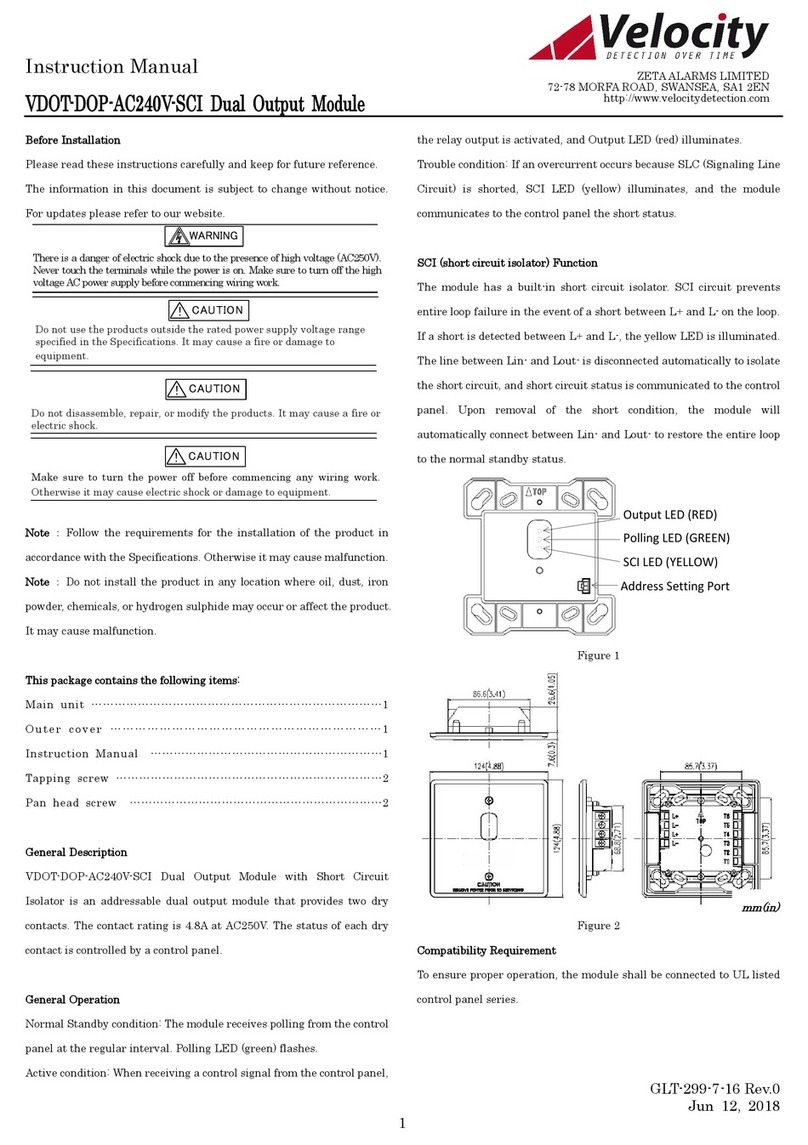
Velocity
Velocity VDOT-DOP-AC240V-SCI instruction manual

GAC
GAC ESD5500E Series manual

Brooks Instrument
Brooks Instrument PC100 Series Installation and operation manual

Mitsubishi
Mitsubishi Melsec-Q QD63P6-U-HW user manual
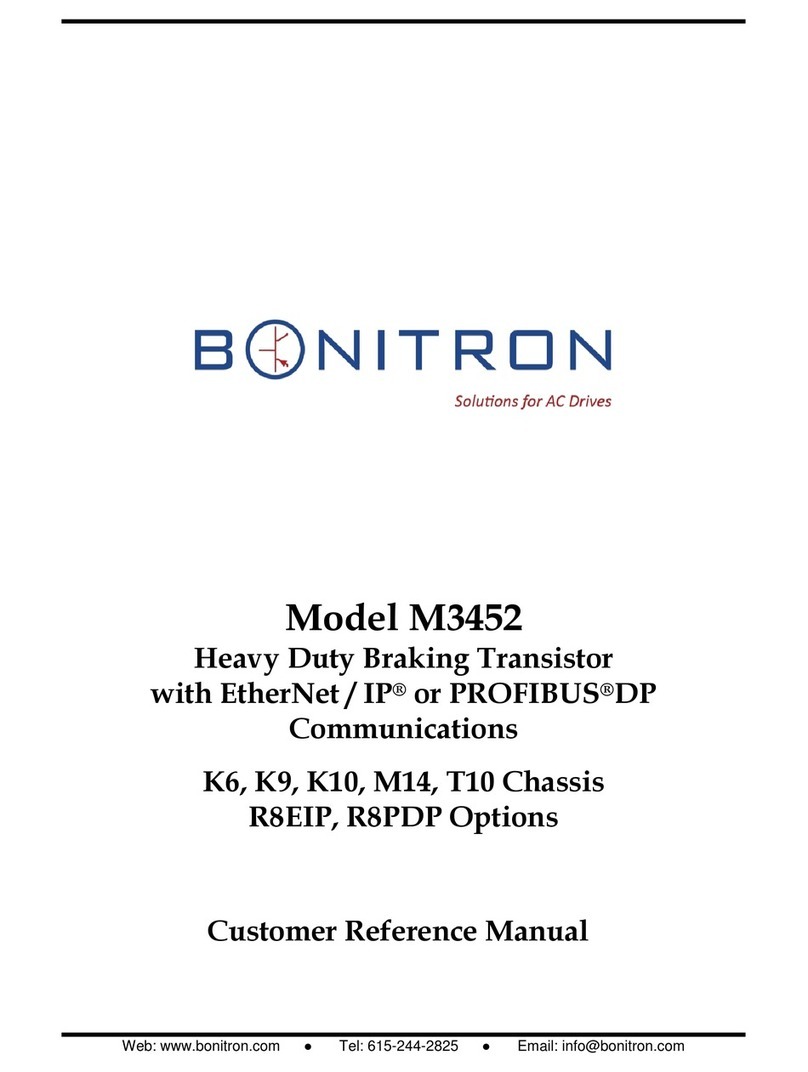
bonitron
bonitron M3452 Reference manual
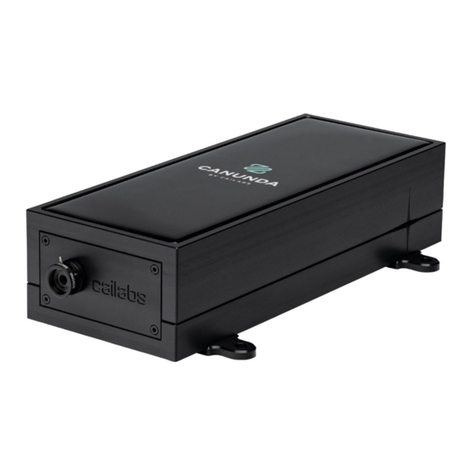
Cailabs
Cailabs CANUNDA-PULSE installation manual
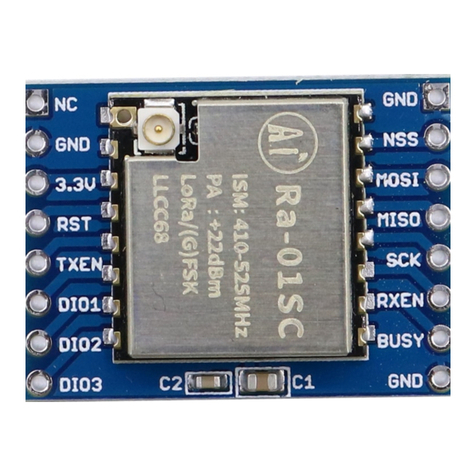
Ai-Thinker Technology
Ai-Thinker Technology Ra-01SC manual
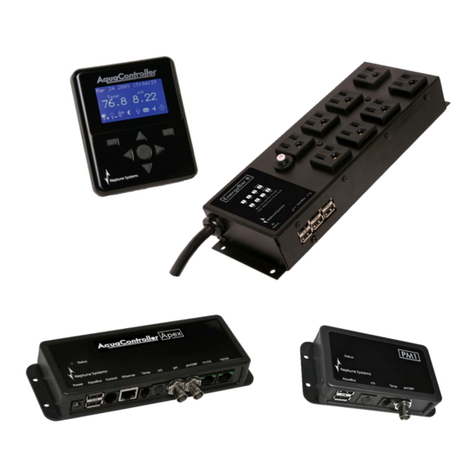
Neptune Systems
Neptune Systems AquaController Apex Classic Setup and Programming Guide
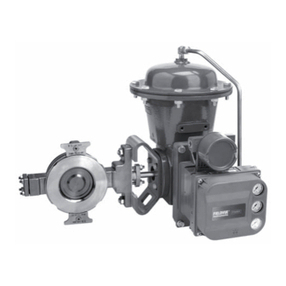
Emerson
Emerson Fisher 8580 instruction manual
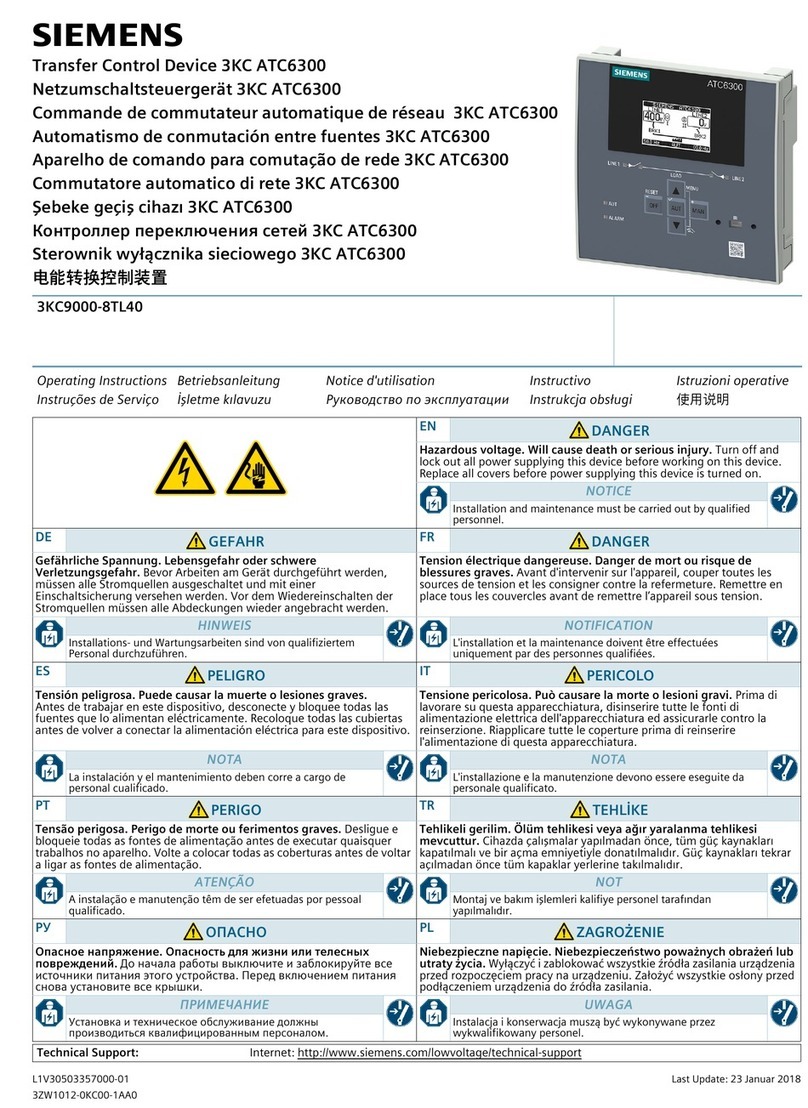
Siemens
Siemens 3KC ATC6300 operating instructions
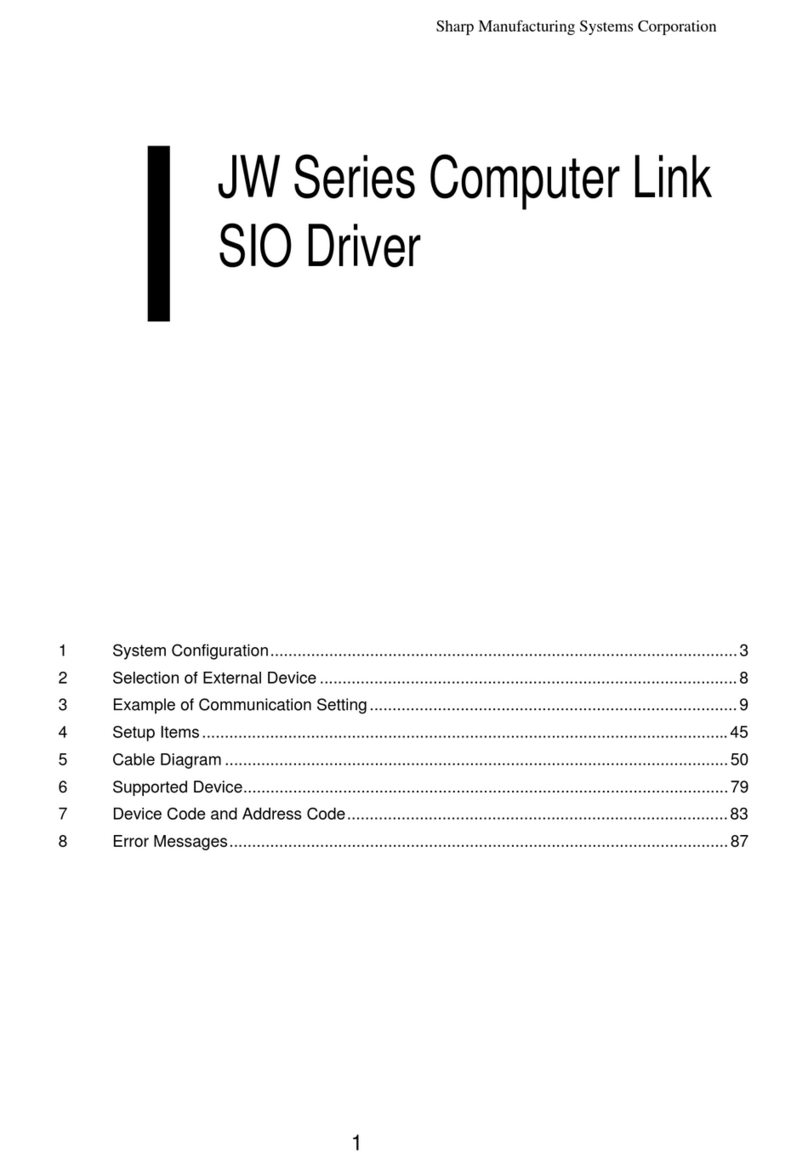
Sharp
Sharp JW Series Connection manual
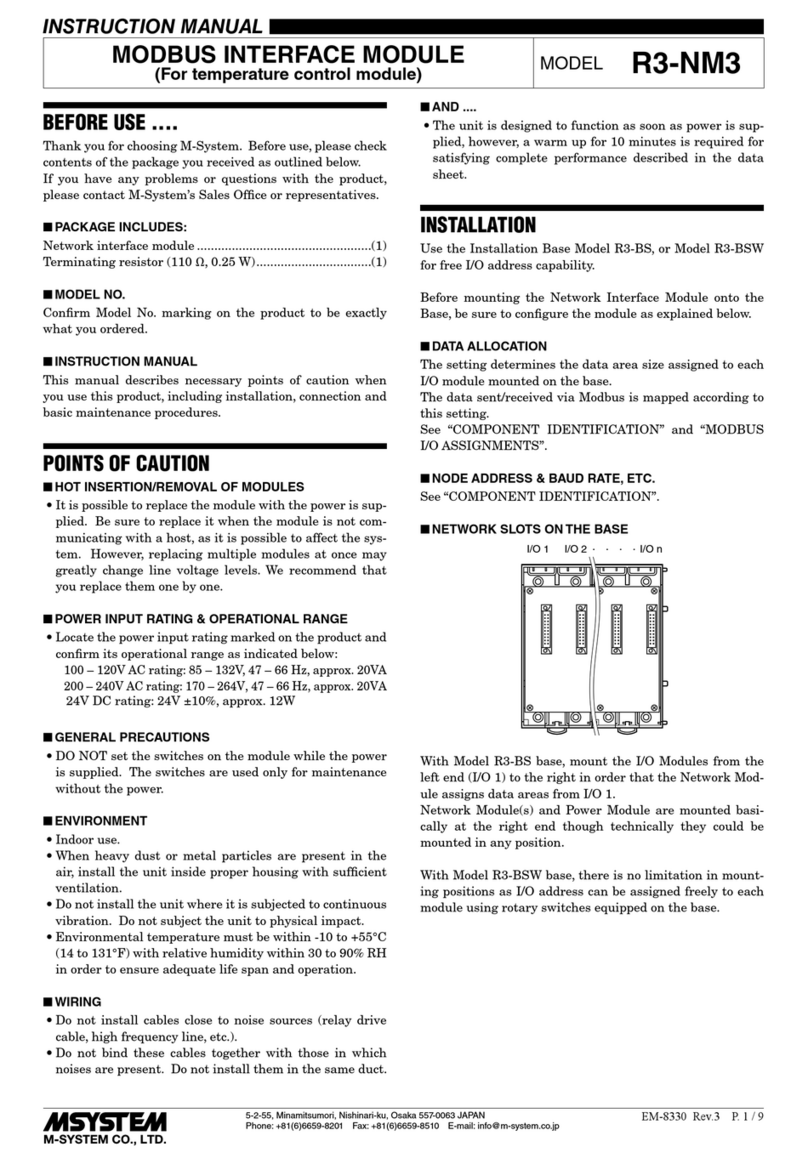
M-system
M-system R3-NM3 instruction manual
